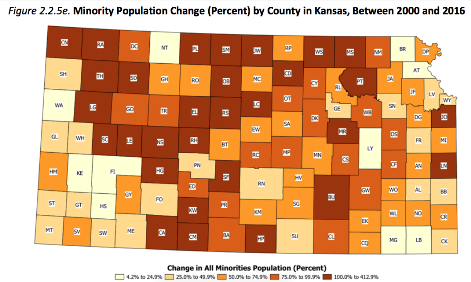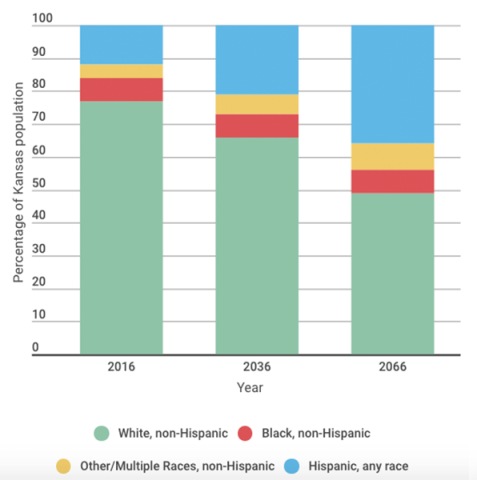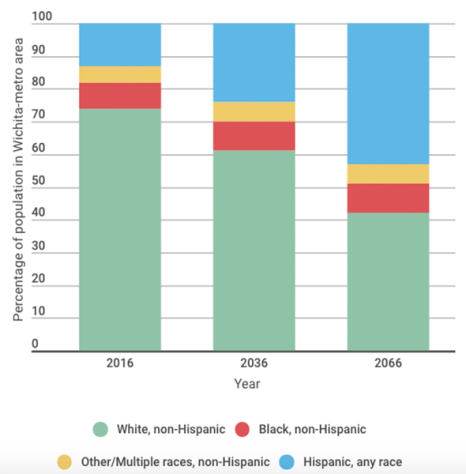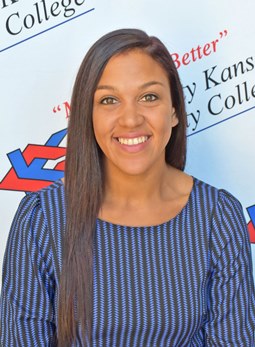
by Nadya Faulx, Kansas News Service
Kansas is on its way to becoming a majority-minority state, with white residents expected to make up less than half of the population by 2066.
A new report from the Kansas Health Institute shows that the state is quickly becoming older, more urban and more diverse.
“The urban areas of our state have seen some increase in the white population,” said Steve Coen, head of the Kansas Health Foundation, which commissioned the report. “Every county in the state has seen an increase in diverse populations, people of color. Every single county.”
Kansas’ overall population was about 2.9 million in 2016; it’s expected to grow to 3.2 million by 2036, and 3.6 million by 2066. The growth is driven entirely by minority groups: The Hispanic population in Kansas is expected to more than double in the next 20 years to about 20 percent. Meanwhile, the white population is projected to shrink steadily, following a trend that goes back to 2000.
“If we did not have this growth in minority population in the state of Kansas,” Coen said, “we would not have had any growth in Kansas whatsoever in the last 16 years.”


The Wichita metro area mirrors the shift happening at the state level, with minority populations — Hispanics, African-Americans, Asian-Americans and Native Americans — expected to make up more than half of the total population by 2066, if not sooner.
“I think Wichita’s going to change much quicker,” Coen said.
He said in many ways, the change is a good thing for Kansas, not just culturally, but also economically: The growth in minority populations has kept the state’s unemployment rate stable, allowing for a larger pool of labor for businesses.
“To have a lower unemployment rate, we couldn’t recruit any industries to Kansas,” Coen said. “We already have a really low unemployment rate the way it is right now.
“And we’ve heard our community leaders talk a lot about how we need to have this talent in our community in the future. We need to have this work force, and they’re struggling with how to do that.
“So let’s embrace this change, and figure out how we can use this future workforce that we have that will probably stay in our community.”
He said the changing demographic makeup will have implications, like on education. Black and Hispanic students in Kansas graduate high school at lower rates than their white peers; and while dropout rates have fallen across the board nationally, they’re highest among Hispanic students.
“I think with this change, of us becoming a majority-minority state, education becomes an even bigger factor,” Coen said. “We have to talk about how do we address that issue long-term.”
Follow Nadya Faulx on Twitter @NadyaFaulx. To contact KMUW News or to send in a news tip, reach us at [email protected]. Kansas News Service stories and photos may be republished at no cost with proper attribution and a link back to the original post.
See more at http://kcur.org/post/minority-populations-driving-future-kansas-growth

